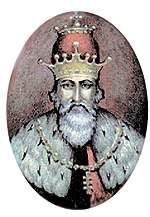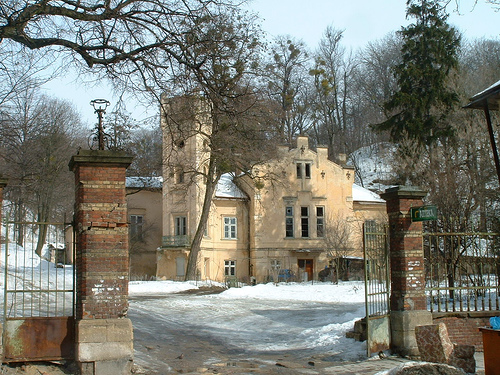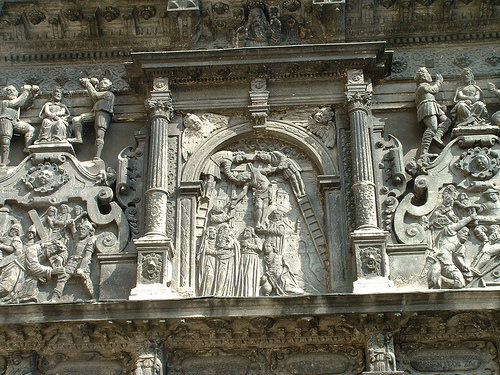Ukraine Today
Watch and Read about Ukraine Today

Ukraine information
Street view of Ukrainian cities on Google
Lviv For Tourists
Lviv was founded in the mid-13th century by Prince Danylo Halitski of Galychyna (Galicia), as a fortification town to protect borders of Galychyna - a former Western princedom of Kievan Rus Empire. (The ancient Ukraine with its capital city of Kiev was the most powerful and geographically the largest state in Europe in the 11th century). The Galychyna became the Kingdom of Galicia after Danylo had been  crowned in Peremyshl (now Przemysl, Poland). The city of Lviv was named after King Danylo’s son Lev (Leo). The first mention of Lviv in early chronicles is from 1256, although recent archaeological excavations revealed that the first settlement appeared there in the 6th century. Galicia, with Lviv as its capital, kept its identity despite many boundary changes through centuries.
crowned in Peremyshl (now Przemysl, Poland). The city of Lviv was named after King Danylo’s son Lev (Leo). The first mention of Lviv in early chronicles is from 1256, although recent archaeological excavations revealed that the first settlement appeared there in the 6th century. Galicia, with Lviv as its capital, kept its identity despite many boundary changes through centuries.
Due to its favourable location on the crossroads of trade routes, Lviv quickly grew into the centre of trade and commerce for the whole region.
Galicia was taken over by Poland in the 14th century. Its nobility eventually adopted the Polish language and religion - Roman Catholicism but the vast majority of people remained Ukrainian Orthodox (Greek form of Christian worship accepted from Constantinople by Kievan Rus in 988) and later joined the Ukrainian Catholic Church which acknowledged the Pope's spiritual supremacy but adhered to the area's Greek Orthodox forms of worship. Poland changed the name of Lviv to Lwow. From 1356 the burghers had the right of self-government, which implied that all city issues were to be solved by a city council, elected by wealthy citizens. In 1661 the first university was opened and was named after the name of the King of Poland, Jan Kazimierz II (now Ivan Franko National University of Lviv).
 In the First Partition of Poland (1772), Galicia became part of the Hapsburg Austro-Hungarian Empire but remained dominated by Poles. Austria changed the name of Lwow to Lemberg and made it the capital of the Kingdom of Galicia.
In the First Partition of Poland (1772), Galicia became part of the Hapsburg Austro-Hungarian Empire but remained dominated by Poles. Austria changed the name of Lwow to Lemberg and made it the capital of the Kingdom of Galicia.
In 1784, after a break the former Jan Kazimierz University was reopened and then renamed after Austrian emperor Kaiser Jozef II. Lectures were held in Latin, German, Polish and Ukrainian.
In 1844 the Technical Academy was opened in Lemberg (later it became Technical School in 1877, Lviv Polytechnic Institute in 1939 and National University “Lviv Polytechnic” in 1994).
In the nineteenth century, construction, trade, transport and industry started to develop rapidly until First World War burst out. Austria contributed parks, cobble stone streets, quality architectural buildings and Lviv Opera House (a small copy of the Opera House of Vienna).
Towards the end of the 19th century, Lviv became the centre of a new Ukrainian national movement. Many prominent cultural and political leaders lived and worked in Lviv. Among them, Ivan Franko and Mykhailo Hrushevsky - the most outstanding representatives of democratic activists and cultural leaders of the country. Lviv became famous as the crossroads of Ukrainian, Polish, and Jewish cultures.
 With the collapse of the Hapsburg Empire, at the end of Word War I, Lviv was proclaimed the capital of the Independent West-Ukrainian Republic. But the troops of the re-emergent Poland seized the city, and Lviv returned to Polish rule until the Soviet Army took control in September, 1939 (In accordance with the Ribbentrop-Molotov Pact Lviv together with Western-Ukrainian lands was annexed to the Soviet Union). Lviv was occupied by Germany from 1941 to 1944. Almost entire Jewish population of Lviv was murdered by Nazis. In 1944, Lviv again went under Soviet rule.
With the collapse of the Hapsburg Empire, at the end of Word War I, Lviv was proclaimed the capital of the Independent West-Ukrainian Republic. But the troops of the re-emergent Poland seized the city, and Lviv returned to Polish rule until the Soviet Army took control in September, 1939 (In accordance with the Ribbentrop-Molotov Pact Lviv together with Western-Ukrainian lands was annexed to the Soviet Union). Lviv was occupied by Germany from 1941 to 1944. Almost entire Jewish population of Lviv was murdered by Nazis. In 1944, Lviv again went under Soviet rule.
During the periods 1939-1941 and 1944-1949 hundreds of thousands of Western Ukrainians were treated by Stalin regime as enemies of the state, and numerous people were murdered or exiled to labour camps in Siberia (Eastern part of Russia). Only a small part of Ukrainian and Polish populations of Galicia did manage to escape to Western Europe, North America and Australia.
After a few decades of Soviet repressions (since 1946), the Ukrainian Catholic Church restarted its activities again in 1991, as soon as the Independence of Ukraine was announced. The church became a consolidating power for local population, which had been following Catholic faith through centuries.
Today, Lviv is the most significant economic and cultural centre of Western Ukraine. It attracts milliond of tourists from Europe and other countries annually, in all seasons of the year. Unlike Esatern regions of the country which still bear numerous traces of Soviet-time culture, Lviv is famous as the most "European" city of Ukraine.
In 1998 the city of Lviv was included into the UNESCO's list of World Heritage Cities.



